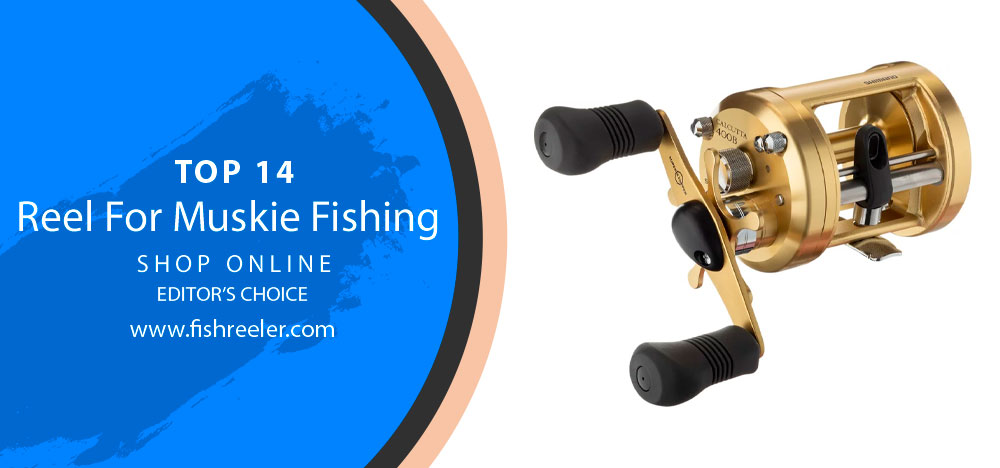
Reeling in the Giants: Unraveling the Secrets of Muskie Fishing Reels
Hooked on Muskies: The Thrill of the Chase
Muskie fishing is an adventurous and rewarding pursuit that draws anglers from around the world, driven by the excitement and challenges involved in catching these elusive giants. Known for their size, strength, and cunning, muskies are truly a prized catch that requires patience, skill, and, of course, the right gear.
Gearing Up: The Reel Deal in Muskie Fishing
A critical aspect of muskie fishing gear is the reel, as it plays a vital role in casting, controlling, and landing the fish. Choosing the perfect reel can make all the difference between an enjoyable and successful fishing trip and an experience filled with frustration and disappointment. Therefore, understanding the essential features and types of reels suitable for muskie fishing becomes indispensable for any angler looking to improve their chances of landing these formidable fish.
Charting the Course: A Comprehensive Guide
In this article, we’ll take a deep dive into the world of muskie fishing reels, exploring their key features, different types, and top picks available on the market. Moreover, we’ll share some tips and techniques for catching muskies and discuss how a well-chosen reel can contribute to your overall success. So, let’s get started on the journey to reel in those giants and become a true muskie fishing pro!
Muskie Fishing Unleashed: A Deep Dive into Choosing the Ultimate Reel
Do you want to catch the biggest and most powerful freshwater fish in North America? If so, then you need to use the best reel for muskie fishing. No matter what fishing style you use, having the right reel for muskie fishing is essential. So, without further ado, let’s take a closer look at some of the top-rated reels for muskie fishing.
In this blog post, we will recommend some of the top-rated reels for muskie fishing. We will also provide a buyer’s guide to help you choose the right reel for your needs. Whether you are a beginner or an experienced angler, read on to find out more about the best reels for muskie fishing!
1# Cabela’s DepthMaster Metal Line Counter Trolling Reel
Cabela’s DepthMaster Metal Line Counter Trolling Reel is a top-of-the-line trolling reel that’s built to last. It features a rugged, corrosion-resistant aluminium frame and spool, reinforced with stainless steel side plate rings. The titanium-coated stainless steel level wind ensures smooth operation, while the carbonite drag system provides powerful fish stopping power. The line counter measures in feet for accurate trolling depths, and the XL brass gearing ensures smooth retrieves. This reel also features a 2+1 system with stainless steel ball bearings plus anti-reverse for optimal performance. The soft-touch knob provides comfortable handling, while the aluminium handle delivers strength and durability.
2# Shimano Antares A Baitcast Reel
The Shimano Antares A is a baitcasting reel that’s perfect for freshwater use. It features a magnesium Hagane body that’s super-lightweight, and it has an MGL III spool for smooth, consistent casting. The Silent Tune vibration reduction system ensures a quiet performance, and the X-Ship pinion support system provides superior gear alignment. Plus, the premium SVS Infinity Brake delivers up to 11 lbs. of drag power.
3# Daiwa Steez SV TWS Baitcast Reel
The Daiwa Steez SV TWS Baitcast Reel is light and responsive, with an ergonomic design that’s almost impossible to backlash. It’s perfect for casting lightweight lures with precision and accuracy, and the 12-bearing system ensures smooth trouble-free performance. The Air Brake cast control system helps you achieve maximum distance and pinpoint accuracy, while the UTD carbon drag provides fish-stopping power when needed. And for anglers who demand the best, there’s the innovative T-Wing line guide aperture that delivers unmatched casting performance.
4# Daiwa Zillion TW HD Baitcast Reel
The Daiwa Zillion TW HD baitcasting reel is the perfect choice for anglers who demand high performance and precision. This reel is extremely smooth, yet designed to handle heavy-duty work. Featuring a lightweight aluminium frame and Zaion gear side plate, it’s also incredibly durable. With its T-Wing System-level wind for smooth line flow, G1 Duralumin Deep Spool, Magforce-Z braking system, and Zero Adjuster, this reel delivers premium performance every time you use it. Plus, with its 11-bearing system and magnesium alloy spool, it provides incredible torque and power when fighting fish.
5# Shimano Calcutta B Round Baitcast Reel
Shimano Calcutta B Round Baitcast Reel – Professional grade baitcasting reel designed for bass fisherman. Features a durable cold-forged aluminium frame and side plates, as well as a spool and bearings that are resistant to rust. Boasts a wide range of drag settings to handle any fish imaginable, as well as Shimano’s Super Stopper one-way roller bearing system for smooth, accurate casting. The CT 200GTB also features the Lo-Mass Drilled Spool System which reduces the overall weight of the reel without sacrificing strength or performance.
6# PENN Fathom Baitcast Reel
The Penn Fathom baitcasting reel is built for professional anglers who demand the highest quality and performance. The full-metal body and crank side plate protect internal components, while the smooth 6+1 stainless steel bearing system ensures a smooth drag at all settings. The brass main gear and bearing-supported bronze pinion gear provide durability and power, while the HT-100 carbon-fibre drag washers deliver consistent pressure fishing after fishing. And with line-capacity rings that tell you to line status at a glance, the TiN coated level wind system laying line straight and even, and dual-action casting brake dialling in control, you’ll be able to fish like a pro with the Penn Fathom baitcasting reel.
7# Shimano TranX 300/400 Baitcast Reel
The Shimano TranX baitcasting reel is one of the most powerful and durable reels on the market. The Hagane body ensures a long life, while the oversized HEG gearing provides more power and torque than ever before. The X-Ship internal reinforcement system keeps everything in perfect alignment, while the Advanced Coreprotect sealing system protects your gears from the harshest environments. The precision aluminium S3D spool holds more line than ever before, and the QuickFire II clutch bar ensures smooth and easy operation. Plus, with 5+1 bearings and a variable braking system, this reel is ready for any fishing challenge you might encounter.
8# Lew’s Custom Lite SLP Baitcast Reel
The Lew’s Custom Lite SLP baitcasting reel is perfect for anglers who demand quality performance without sacrificing weight. Featuring a Tanso Tech frame, C45 carbon side plates, and 3 drain ports, this reel weighs in at only 4.9 oz., making it one of the lightest baitcasters on the market today. With its titanium-anodized aircraft-grade Duralumin 30mm U-spool, aluminium alloy Speed Gears®, bearing-supported P2 Super Pinion system, and externally adjustable 6-pin 27-position ACB braking system, this reel can handle any fishing situation you might encounter.
9# Daiwa Tatula 300 Baitcast Reel
The Daiwa Tatula 300 baitcast reel is the big brother of the popular Tatula CT reel. Designed for fishing bigger bass baits, this reel sports a beefy frame and massive gearing that provides super-smooth long-cast performance. The T-Wing level wind system ensures accurate casts time after time, while the external Magforce cast control allows for easy adjustments. When it comes to serious bass fishing, the Tatula 300 baitcast reel delivers.
10# Okuma Komodo SS Casting Reels
Looking to make the most of your time on the water? Look no further than Okuma’s Komodo SS Casting Reels. Constructed with die-cast aluminium frames and side plates, as well as heavy-duty stainless steel gearing and shafts, these reels are built to last.
The corrosion-resistant coating ensures smooth operation in harsh freshwater or saltwater environments. Multidisc Carbonite drag system with a micro click star adjustment creates precise drag settings and puts perfect pressure on running fish. Machined anodised-aluminium spool reduces overall weight without sacrificing strength.
11# Shimano Curado DC Baitcast Reel
The Shimano Curado DC Baitcast Reel is the computerized version of the performance favourite, making it even easier to cast with precision and accuracy. The unique “Cast Smart” Digital Control technology system measures spool speed every 1,000th of a second, and the microcomputer adjusts brake pressure accordingly to prevent backlashes and maximize casting distance.
The reel’s rigid, durable Hagane body is made of lightweight CI4+ carbon alloy construction for ultimate strength and durability. X-Ship pinion support bearing and MicroModule gearing ensure smooth operation, while the 6+1 bearing system with S-ARB shielded stainless steel anti-rust ball bearings provide dependable performance.
12# Lew’s Custom Inshore SLP Casting Reel
The Lew’s Custom Inshore SLP Casting Reel is a top-of-the-line choice for serious anglers who demand the best performance and durability. This reel features a one-piece aluminium frame for added strength, along with an aircraft-grade aluminium spool that provides ample capacity for longer runs.
The multi-setting brake dual cast control ensures smooth, precise casting, while the sealed 10-bearing system keeps everything running smoothly. The corrosion-resistant stainless steel ball bearings provide unmatched durability and performance, while the carbon-fibre drag system offers up to 20 lbs. of drag power. The bowed aluminium handle with Winn Dri-Tac knobs provides a comfortable grip, and the bowed aluminium drag star ensures reliable operation.
13# PENN Squall Baitcast Reel
The Lew’s Custom Inshore SLP Casting Reel is a top-of-the-line choice for serious anglers who demand the best performance and durability. This reel features a one-piece aluminium frame for added strength, along with an aircraft-grade aluminium spool that provides ample capacity for longer runs.
The multi-setting brake dual cast control ensures smooth, precise casting, while the sealed 10-bearing system keeps everything running smoothly. The corrosion-resistant stainless steel ball bearings provide unmatched durability and performance, while the carbon-fibre drag system offers up to 20 lbs. of drag power. The bowed aluminium handle with Winn Dri-Tac knobs provides a comfortable grip, and the bowed aluminium drag star ensures reliable operation.
14# Lew’s Pro SP Baitcast Reel
You demand the best when you’re casting for bass, and that’s what you’ll get with Lew’s® Pro SP Baitcast Reel. Its Super Low Profile design ensures a smaller profile on the water, while the shallow Duralumin spool provides ample space for line and bait. The included QuietCast ACB 6-pin brake system gives you precise control over your casts, while the external adjustments make it easy to customize your skipping zone. You’ll love fishing with this reel thanks to its 8+1 bearing system and 95mm aluminium handle with EVA knobs.
Understanding Muskie
Before delving into the specifics of muskie fishing reels, it’s essential to understand the target species—muskellunge, or muskies, as they’re commonly known. This knowledge will help you better appreciate the requirements of a good muskie fishing reel and make more informed decisions while selecting one.
Muskies Unmasked: Size, Weight, and Habitat
💎Size and Weight
Muskies are large, elusive fish that belong to the Esocidae family, closely related to pike. They’re renowned for their impressive size and strength. A typical adult muskie ranges from 30 to 48 inches in length, with some even surpassing the 50-inch mark. In terms of weight, they can vary from 15 to 36 pounds, with exceptional specimens reaching over 60 pounds. The sheer size and power of these fish make them a challenging and enticing target for anglers.
💎Habitat
Muskies predominantly inhabit freshwater lakes and rivers across North America, with the highest concentrations found in the northern regions of the United States and southern Canada. They prefer clear, cool waters with abundant aquatic vegetation, which provides them with ample cover for ambushing prey. They are also known to frequent areas with a mix of shallow and deep waters, such as drop-offs, weed edges, and structures like rock piles or sunken logs.
Decoding Muskie Behavior: Seasonal Rhythms and Feeding Patterns
🔵Seasonal Patterns
Muskies exhibit specific behavioral patterns depending on the season. During spring, as the water temperature rises, muskies move to shallow waters to spawn. This is an excellent time for anglers to target them in shallow bays and near weed beds. In the summer months, muskies can be found in deeper, cooler waters during the day, while they venture into shallower areas to feed during early morning and late evening hours. Fall is generally considered the prime muskie fishing season, as these fish aggressively feed in preparation for the harsh winter months. During winter, muskie activity significantly slows down due to the cold temperatures, making them challenging to catch.
🔵Feeding Habits
Muskies are ambush predators with a diet primarily consisting of fish such as ciscoes, suckers, and perch. However, they’re also known to prey on small aquatic animals, birds, and mammals when the opportunity arises. Their predatory nature is characterized by short bursts of high-speed attacks, which enable them to engulf their prey whole. These powerful, swift attacks demand quick reflexes and durable equipment from anglers, making the choice of an appropriate reel even more crucial in muskie fishing.
Key Features of a Muskie Fishing Reel
To increase your chances of success when fishing for muskies, it’s essential to understand the key features of a muskie fishing reel and how they contribute to the overall performance. Let’s dive into these crucial aspects to help you make an informed decision when choosing the perfect reel.
Drag System Dynamics: Key to Success
🧿Definition and Importance
The drag system on a fishing reel is responsible for applying tension to the fishing line, which helps control the line’s release when a fish pulls on it. A smooth and robust drag system is essential in muskie fishing, as it prevents the line from breaking under the intense pressure exerted by the powerful fish. The right drag setting allows you to maintain control during the fight while ensuring the muskie doesn’t escape.
🧿Types of Drag Systems
There are two main types of drag systems found in muskie fishing reels: star drag and lever drag. Star drag systems use an adjustable star-shaped dial located near the handle to increase or decrease the drag tension. Lever drag systems, on the other hand, have a lever that can be moved to control the drag tension smoothly. Both systems have their pros and cons, but the star drag system is more common in muskie fishing reels due to its simplicity and ease of use.
🧿Recommended Drag Settings for Muskie Fishing
When setting the drag for muskie fishing, it’s essential to strike a balance between sufficient tension to control the fish and allowing some line release to prevent breakage. A general guideline is to set the drag at one-third of your line’s breaking strength. For example, if you’re using a 30-pound test line, set the drag to roughly 10 pounds.
Line Capacity: Giving Your Catch Some Leeway
🌌Importance of Sufficient Line Capacity
Sufficient line capacity is critical for muskie fishing due to the potential for long runs and sudden bursts of power from the fish. Having enough lines on your reel ensures that you won’t run out of line during the fight, preventing the fish from escaping and minimizing the chances of a broken line.
🌌Factors Affecting Line Capacity
Line capacity depends on the size of the reel, the thickness of the fishing line, and the line material. A larger reel typically accommodates more lines, while a thinner line allows for increased capacity on the same reel size. Furthermore, some line materials, such as braided lines, offer a higher strength-to-diameter ratio, allowing for more line capacity without sacrificing strength.
🌌Recommended Line Capacity for Muskie Fishing
For muskie fishing, it’s advisable to have a reel with a minimum line capacity of 150 to 200 yards of heavy-duty monofilament or braided line, with a breaking strength of 30 to 80 pounds. This capacity should be sufficient to handle most muskie encounters.
Gear Ratio: Reeling at the Right Speed
🐋Definition and Significance
The gear ratio of a reel refers to the number of times the spool rotates for each turn of the reel handle. The gear ratio plays a significant role in determining the speed of line retrieval and the power exerted during the retrieval process. A higher gear ratio retrieves the line faster, while a lower gear ratio provides more power.
🐋Pros and Cons of Different Gear Ratios
High gear ratios (e.g., 7.1:1) are suitable for quickly retrieving lures and covering more water, but they might lack the power to handle heavy loads. Low gear ratios (e.g., 4.9:1) offer more power and torque for battling large, strong fish-like muskies but might limit the retrieval speed.
🐋Ideal Gear Ratio for Muskie Fishing
For muskie fishing, a gear ratio between 5.1:1 and 6.4:1 is generally considered ideal. This range offers a good balance between retrieval speed and power, allowing you to cover more water efficiently while still providing sufficient torque to handle large, powerful fish. Ultimately, your personal preference and fishing techniques will influence your choice of gear ratio.
Built to Last: Durability and Maintenance Matters
🐳Importance of Durable Materials
A muskie fishing reel should be constructed with high-quality, durable materials to withstand the rigors of battling these strong fish. The reel’s durability not only ensures longevity but also minimizes the chances of failure during a critical moment in the fight. A well-built reel can make the difference between landing a trophy muskie and losing it.
🐳Corrosion Resistance
Given that muskie fishing typically occurs in freshwater environments, corrosion resistance may not be as critical as with saltwater fishing. However, it’s still essential to choose a reel with corrosion-resistant materials and coatings, as they can help prevent damage due to water exposure and extend the reel’s lifespan.
🐳Maintenance Tips
Regular maintenance is key to prolonging the life of your muskie fishing reel and ensuring optimal performance. Here are some maintenance tips to follow:
- Clean the reel after each use, removing any dirt, debris, or vegetation that may have accumulated during your fishing trip.
- Occasionally remove the spool and use a soft brush or cloth to clean the interior components, removing any built-up dirt or grime.
- Lubricate moving parts with a high-quality reel oil or grease to reduce friction, prevent wear, and ensure smooth operation.
- Inspect the reel periodically for signs of wear or damage and replace any worn-out or damaged parts as needed.
- Store your reel in a cool, dry place when not in use to prevent moisture damage and prolong its life.
Types of Reels for Muskie Fishing
There are various types of reels suitable for muskie fishing, each with its own set of advantages and disadvantages. Let’s explore these options to help you determine the most appropriate reel for your specific needs and preferences.
Baitcasting Reels: Power and Precision
💫Advantages and Disadvantages
🐟Best Practices for Using Baitcasting Reels
- Adjust the reel’s brake system and spool tension correctly to minimize backlash.
- Use your thumb to control the spool’s speed during casting, gradually applying pressure to slow the spool as the lure approaches the water.
- Practice your casting technique to gain confidence and improve accuracy.
Spinning Reels: Versatility and Ease
💫Advantages and Disadvantages
🐟Best Practices for Using Spinning Reels
- Select a spinning reel with a high-quality drag system to handle the powerful runs of muskies.
- Use a braided line with a higher strength-to-diameter ratio to maximize line capacity.
- When casting, use a smooth, sweeping motion to increase casting distance and accuracy.
Conventional Reels: The Traditional Approach
💫Advantages and Disadvantages
🐟Best Practices for Using Conventional Reels
- Choose a conventional reel with a strong, smooth drag system to manage the powerful runs and sudden bursts of muskies.
- When casting, use a controlled, overhead motion to improve accuracy and minimize the risk of backlash.
- Regularly check and maintain the reel to ensure optimal performance, as the heavy-duty nature of these reels can lead to increased wear and tear.
Top Muskie Fishing Reels on the Market
To help you make an informed decision when purchasing a muskie fishing reel, we have compiled a list of the top reels currently available. These recommendations are based on criteria such as durability, line capacity, drag system, gear ratio, and overall performance.
On the Reel Hunt: Evaluation Criteria
| Feature | Explanation |
|---|---|
| Durability and construction | The reel should be made of high-quality materials and designed to withstand the rigors of muskie fishing. |
| Drag system | A smooth and strong drag system is essential for controlling the powerful runs of muskies. |
| Line capacity | The reel should have sufficient line capacity to handle the extended runs that muskies are known for. |
| Gear ratio | An ideal gear ratio provides a balance between retrieval speed and power, making it suitable for various muskie fishing techniques. |
| User experience | The reel should be easy to use and comfortable to handle during extended fishing sessions. |
Reeling Royalty: The Top Picks and Reviews
👾Shimano Tranx 300/400
Features and Benefits: The Shimano Tranx series boasts a robust and smooth drag system, high line capacity, and a versatile gear ratio. The X-Ship technology and HEG (High-Efficiency Gearing) improve both casting and retrieving performance.
Price Range and Value for Money: The Shimano Tranx 300/400 is priced between $280 and $330, providing excellent value for money given its outstanding performance and durability.
👾Abu Garcia Revo Toro Beast
Features and Benefits: This low-profile baitcasting reel is designed for heavy-duty applications like muskie fishing. It features a powerful Carbon Matrix Drag System, a high line capacity, and a 4.9:1 gear ratio for extra power. The reel is also available in a high-speed version with a 6.2:1 gear ratio for faster retrieves.
Price Range and Value for Money: The Abu Garcia Revo Toro Beast is priced between $300 and $350, offering excellent performance and quality at a reasonable price.
👾Daiwa Lexa 300/400
Features and Benefits: The Daiwa Lexa series features a solid construction, a smooth Ultimate Tournament Carbon Drag (UTD) system, and a high line capacity. The reel is available in various gear ratios, allowing you to choose the ideal balance between power and speed for your fishing techniques.
Price Range and Value for Money: The Daiwa Lexa 300/400 is priced between $200 and $250, making it a budget-friendly option without sacrificing performance and durability.
Notable Contenders: Honorable Mentions
Okuma Komodo SS: A powerful and durable reel with a smooth drag system, ideal for muskie fishing. Priced between $200 and $300.
Penn Battle III DX: A sturdy and reliable spinning reel with a strong drag system and high line capacity, suitable for those who prefer spinning reels for muskie fishing. Priced between $150 and $200.
Tips and Techniques for Catching Muskie
To maximize your chances of catching a muskie, it is essential to master various tips and techniques. Here, we will discuss the use of appropriate lures and bait, casting techniques, timing and location, and safe methods for fighting and landing these powerful fish.
Lure Them In: Choosing the Perfect Bait
- Select lures that mimic the natural prey of muskies, such as large crankbaits, swimbaits, or soft plastic lures that imitate fish species like ciscoes, perch, or suckers.
- Use inline spinners or spinnerbaits with large, flashy blades to attract muskies from a distance and trigger aggressive strikes.
- Experiment with various colors, sizes, and types of lures to determine which ones work best in your specific fishing conditions.
Mastering the Cast: Techniques for Success
- To cover more water and increase your chances of locating muskies, fan-cast your lures in a wide arc, systematically working your way around the fishing area.
- When using baitcasting or conventional reels, control the spool’s speed with your thumb to minimize backlash and improve accuracy.
- Use a smooth, sweeping motion when casting spinning reels to achieve long casting distances and greater accuracy.
Time and Place: When and Where to Find Your Trophy
- Muskies are known to be more active during early mornings and late afternoons, so plan your fishing trips during these periods for increased success.
- Focus your efforts on areas with underwater structures, such as weed beds, rocky points, or drop-offs, where muskies are likely to be hunting for prey.
- Pay attention to seasonal patterns, as muskies may move to different parts of a lake or river depending on the time of year. For example, they are typically found in shallower water during the spring and fall, while they may seek deeper, cooler water during the hot summer months.
The Final Tug: Safely Securing Your Catch
- When a muskie strike, set the hook firmly by sweeping the rod upwards and applying steady pressure.
- Allow the fish to make powerful runs and tire itself out before attempting to bring it closer to the boat. Use your reel’s drag system to control the fish and prevent line breakage.
- When the muskie is near the boat, use a large, durable net or a specialized muskie cradle to safely land the fish while minimizing harm to both the angler and the fish.
- Handle the fish with care, using tools like long-nose pliers to remove hooks and a jaw spreader to open the muskie’s mouth safely.
- Practice catch-and-release principles and return the fish to the water as quickly as possible, ensuring its survival and promoting healthy populations for future generations to enjoy.
FAQ: Muskie Fishing
Conclusion: Unlock the Secrets to Muskie Fishing Reels
The Perfect Reel: Your Key to Muskie Mastery
Selecting the appropriate reel for muskie fishing is crucial, as it plays a significant role in your overall fishing experience and success. The right reel should have a smooth and powerful drag system, sufficient line capacity, a suitable gear ratio, and durable construction to handle the strength and power of these impressive fish. By carefully considering the various options available, such as baitcasting, spinning, and conventional reels, you can make an informed decision that suits your specific needs and preferences.
An Invitation to the Muskie Fishing World
Now that you have a better understanding of the reels available and the key techniques for catching muskies, it is the perfect time to put your newfound knowledge to the test. Whether you are a seasoned angler or a complete novice, muskie fishing offers an exciting and rewarding challenge. With the proper equipment, techniques, and perseverance, you could soon find yourself face-to-face with the elusive muskie and experience the thrill of reeling in one of these giants.
Share Your Reel-Life Adventures
We would love to hear about your muskie fishing adventures and any additional tips or insights you may have gained along the way. Share your experiences, favorite lures, techniques, and reel recommendations with us in the comments section below or on social media. Let’s continue to learn from each other, grow as anglers, and contribute to the passionate muskie fishing community!
A full-length article answering common questions with product reviews and useful tips about Best Reel For Muskie Fishing – TOP-Rated Reels For Muskie Fishing This is a buyer’s guide to help you find the best reel for muskie fishing by reviewing all of your options, including both spinning reels and baitcasting models. We also provide some practical advice on how to choose the right one based on what you plan to fish for most often. From our research, we recommend that beginners start with a decent reel but nothing too expensive in order to get accustomed to using it before investing in something more expensive later down the line as their skills improve.

I live in Tenerife (Canary Islands) for the last 10+ years and share my daily fishing experiences on my website. Many years of personal experience as a fisherman and the vast experience of my friends allow me to write professionally on any fishing topics (from choosing a flashlight and equipment to deep-sea fishing).
All of my advice is based on practical real-world experience and will be useful to both novice anglers and professionals. Read more about the author.
Affiliate Disclosure: FishReeler.org sometimes gets paid for listings, through sponsors or affiliate programs like Amazon, Ebay, Cabelas, Bass Pro Shop, Shimano, Daiwa, Rapala, Renn, Okuma, KastKing, etс. Clicking a link helps keep FishReeler.org free, at no extra cost to you!
About the author: Each article is verified by the fishing expert Sergio Smirnoff. The articles are written by professional and amateur fishermen with 20+ years of fishing experience.
Note: The views and opinions expressed in this article are those of the authors and do not necessarily reflect the official policy or position of any agency. The articles are for informational purposes only, share your opinions in the comments and join the fishing discussions, let's share our fishing experiences together!

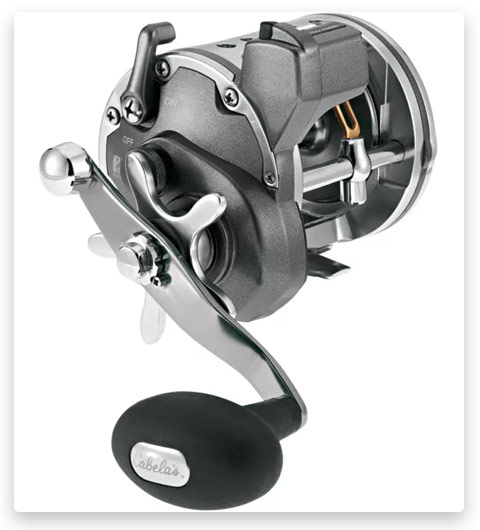
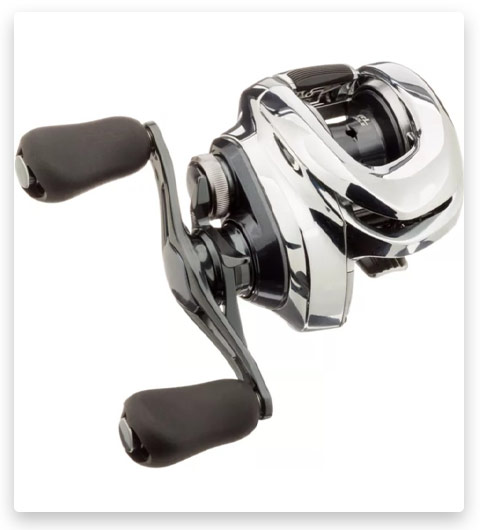


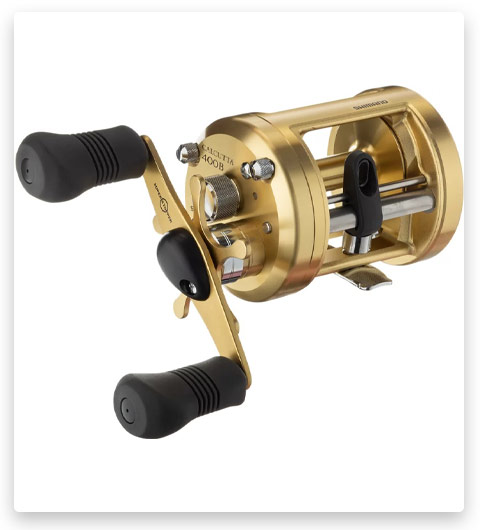
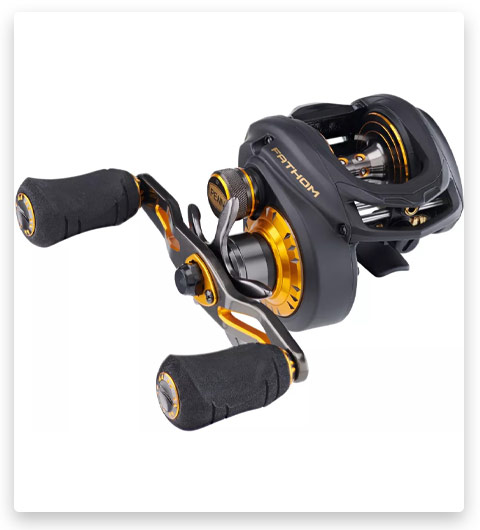
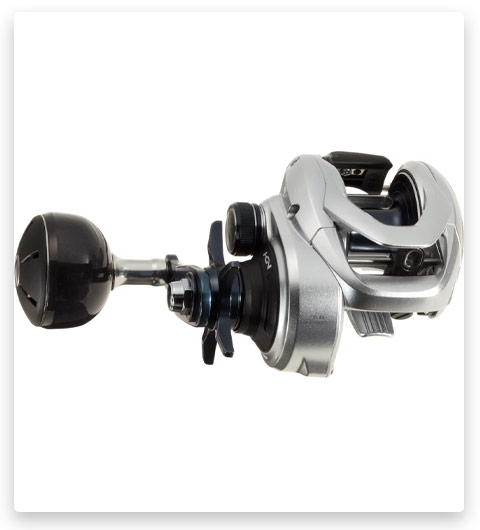
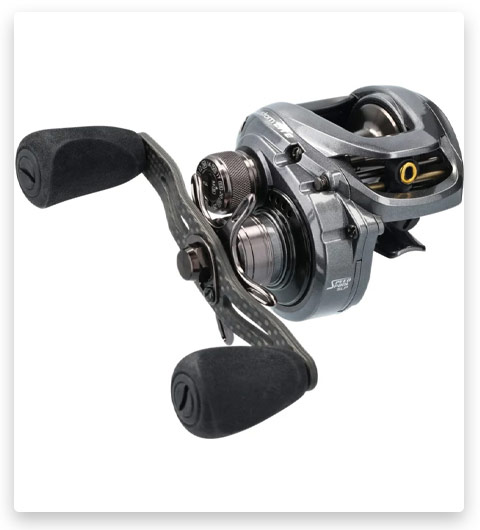
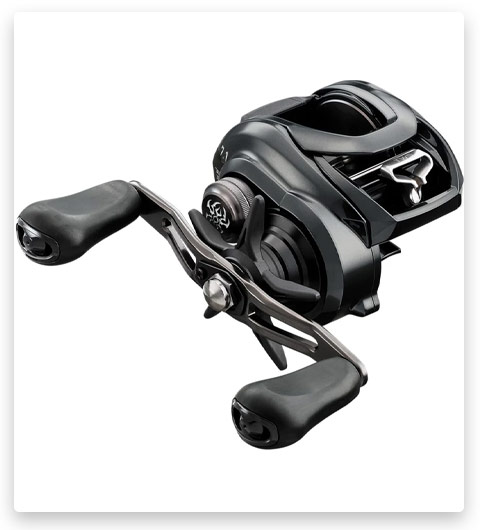
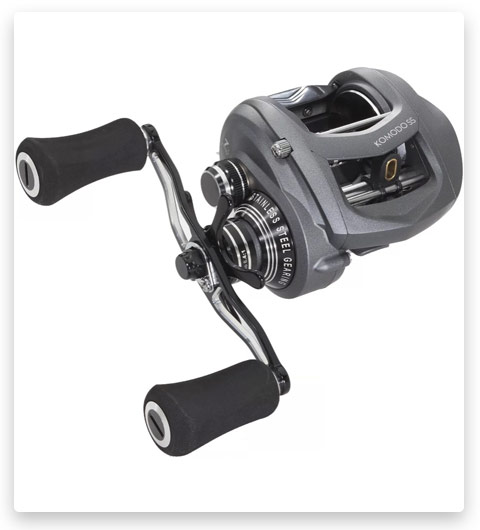



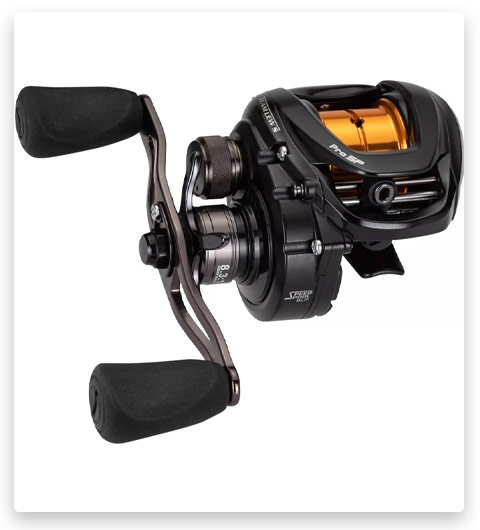
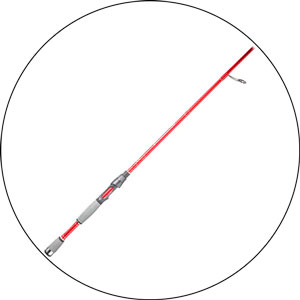
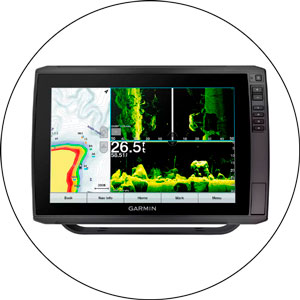
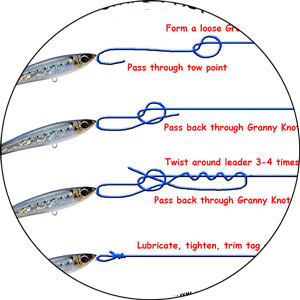
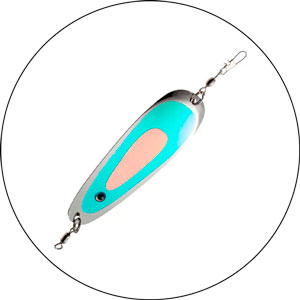

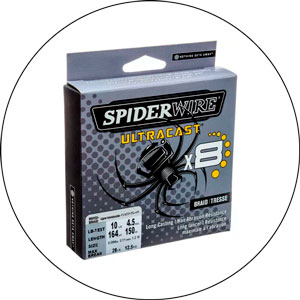
This a thorough and informative piece on the best reels for muskie fishing. I especially liked the FAQ section, addressing common questions and concerns that anglers might have when selecting a reel. Your insights and recommendations will undoubtedly help many people find the perfect reel for their muskie fishing adventures.
Excellent article! As a beginner muskie angler, I found the information on different reel types and what to look for in a quality muskie reel extremely helpful. I also appreciate the suggestions for reels at various price points, catering to different budgets. Keep up the great work!
This article is a fantastic resource for anyone looking to invest in a quality reel for muskie fishing. I like how it not only discusses the key features to consider but also provides specific recommendations with thorough explanations. The tips for proper maintenance and care are helpful as well. Thanks for sharing your expertise!
I highly recommend the Shimano Tranx 400 with the gear ratio of your choice. They’re simply amazing reels for muskie fishing.
On the other hand, I would advise against purchasing a Daiwa Lexa. In my opinion, they are one of the worst musky reels for the price, and their reliability leaves a lot to be desired.
As for the Abu Garcia Toro S, it’s not a bad reel, but the Tranx definitely outshines it in terms of performance. The Toro Beast might look cool, but considering it’s priced similarly to the Tranx, I don’t think it’s worth it. A friend of mine had one and had to clean it very regularly to reduce noise due to its inferior build quality. In short, the Shimano Tranx 400 is the way to go!
I found this article to be really informative and well-written. The comparison chart was a nice touch, making it easy to see the differences between each recommended reel. Thanks for putting this together – it’s a valuable resource for muskie anglers of all experience levels.
You might want to consider a Penn reel that fits your budget, likely something between a 5000 and 8000 series, depending on the size of your reel seat.
While I personally think an 80lb braid may be a bit heavy, opting for 40lb with a 4000 or 5000 series reel might be more appropriate. However, I should note that I don’t have extensive experience with muskie fishing; my background is more in saltwater angling.
In my experience, Penn Pursuits have proven to be quite durable – I’ve had several for over 10 years and they’re still going strong. The Penn Battle series is another solid choice, known for being workhorses in the angling world.
A friend of mine even put a Fierce 7000 on a 12-foot Ugly Stick Surf Rod, and he’s been able to cast it an impressive distance with ease.
I appreciate the detailed breakdown of each reel’s features and the pros and cons. This will definitely help me make an informed decision when choosing a reel for muskie fishing. Keep up the good work!
The Daiwa BG series reels are often recommended for Striper fishing when someone is looking for a heavy-duty reel that doesn’t break the bank.
The BG90 might be a suitable choice, as it is rated with up to 33 lbs of drag.
Regarding line capacity, the BG90 is rated for up to 175 yards of 40 lb mono. Since 80 lb braid has a diameter similar to 17 lb mono, it should work well on this reel.
I’ve noticed that many Striper anglers are using braid these days, and the BG90 has a metal spool, which should work well with a braid.
However, it’s worth noting that finding a budget-friendly reel suited for this purpose may be challenging. Most likely, you’ll end up spending $100 or more on a suitable reel.
It’s great to hear that you’ve recently gotten into the sport! Finding a good, durable low-profile reel at a low price point can indeed be challenging.
One option that comes to mind is the Shimano Curado, which is considered to be among the first musky-durable low-profile reels. Cabelas had them on sale this spring for around $140, which is close to your budget of $120. With some diligent online searching, you might find one within your price range.
If you’re not strictly set on the low-profile design, another option could be the Shimano Cardiff. The commenter has one as a backup and used it to catch a 46-inch fish while throwing Double 8s. They mentioned that they really enjoy using that reel.
Keep in mind that the commenter is still learning about musky gear, but after extensive research, they found that people seem to trust the Abu Garcia 6600 C4 enough for them to buy one as well. At $120, it’s a reasonably priced and durable reel according to what they’ve read.
One commenter mentioned that they bought an Okuma Citrix two summers ago, but unfortunately, it only lasted through one weekend of musky fishing. It was the larger size, possibly the 350. After that experience, they decided to go with the Abu Revo Toro NaCl, which has held up well ever since, without any downtime.
Their suggestion is that your best bet would be to find a quality reel in the used market and set aside some money to have it serviced or inspected if needed. This approach might provide a more durable and cost-effective solution.
Abu Garcia reels are indeed classics in the musky fishing world. However, the commenter suggests considering a C3 instead of a C4, as the C3 seems to be more durable. Additionally, the C4 has a higher gear ratio, which they find is better suited for musky jerkbaits and topwater. For other lures, especially bucktails, the C4 may struggle when reeling in the line.
That being said, the commenter recommends considering the Shimano Cardiff 400 among the options mentioned. It’s not a bad reel and could be smoother than the Abu Garcias. However, they also note that they haven’t used the “new” C3s and C4s, so their opinion is based on their personal experience with the older models.
The Cardiff 400 seems to be a popular choice and a good starting point. The commenter suggests browsing the internet, as you might find a Calcutta 400B for around $150.00. That particular reel is known for being smooth, dependable, and long-lasting.
They also mention not being intimidated by the reel size. Additionally, a word of caution for those who haven’t caught a muskie yet: once you do, you might catch the “muskie fever” and start amassing another tackle collection. Beware of the growing bait monkey!
It’s worth noting that no one has mentioned the Abu Garcia Revo Toro S. The commenter has had theirs for three years, and it still performs like new. Although it has been on the market for a few years, they believe the price, reliability, and overall performance are unbeatable. They’ve even experienced it engaging mid-cast a couple of times (likely due to user error or the power handle) but it still works flawlessly. You can find them on eBay, either right or left-handed (size 60), for $150.
Regarding the Tranx 400, the commenter can’t provide any insights as they’ve never owned or used one, but the lowest price they could find on eBay was $230, which is a significant difference. As for Lexa, they suggest staying away from it. They have a Lexa 300 as a backup reel, and after using it to throw doubles 9’s twice in a day, it began to feel and sound like a coffee grinder.
They’re uncertain if the 400 size has the same internals, but if it does, they would recommend something else, particularly if you don’t want to be limited to smaller-sized baits. The same doubles 9’s were used with Abu several times without any issues. The Lexa model they mentioned had a power 5:1 gear ratio. They aren’t sure about the HD, but the 7:1 gear ratio seems a bit too fast for hard-pulling bucktails.
Another recommendation would be the Okuma Komodo, which is in a similar price range as the Revo Toro S. There are many positive reviews on the website. The only factor preventing the commenter from purchasing it is the size – the 300 size appears to be a bit small, and the 400 is huge compared to Abu or Shimano of the same size, or at least that’s what the numbers suggest.